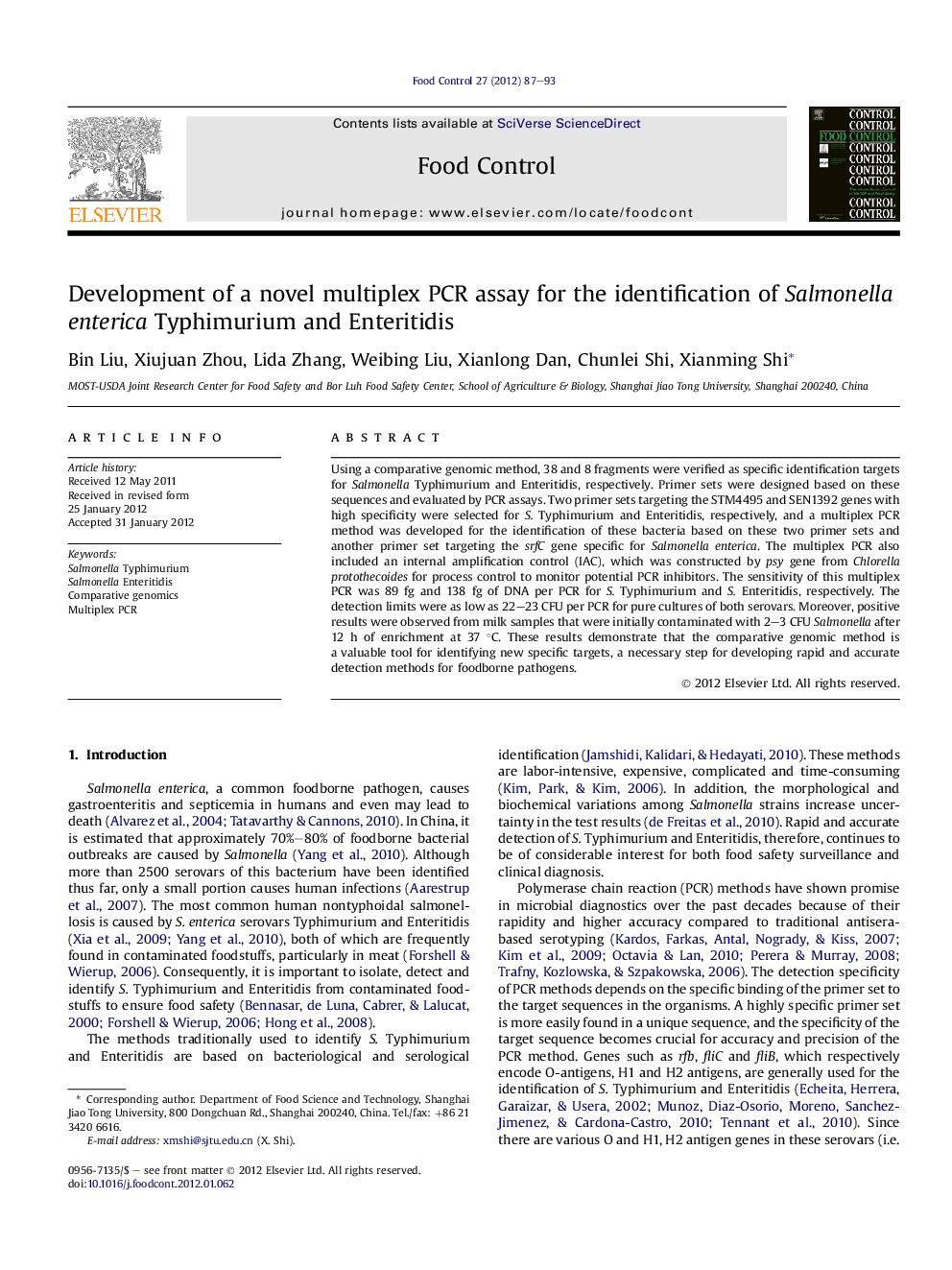| Article ID | Journal | Published Year | Pages | File Type |
|---|---|---|---|---|
| 4559611 | Food Control | 2012 | 7 Pages |
Using a comparative genomic method, 38 and 8 fragments were verified as specific identification targets for Salmonella Typhimurium and Enteritidis, respectively. Primer sets were designed based on these sequences and evaluated by PCR assays. Two primer sets targeting the STM4495 and SEN1392 genes with high specificity were selected for S. Typhimurium and Enteritidis, respectively, and a multiplex PCR method was developed for the identification of these bacteria based on these two primer sets and another primer set targeting the srfC gene specific for Salmonella enterica. The multiplex PCR also included an internal amplification control (IAC), which was constructed by psy gene from Chlorella protothecoides for process control to monitor potential PCR inhibitors. The sensitivity of this multiplex PCR was 89 fg and 138 fg of DNA per PCR for S. Typhimurium and S. Enteritidis, respectively. The detection limits were as low as 22–23 CFU per PCR for pure cultures of both serovars. Moreover, positive results were observed from milk samples that were initially contaminated with 2–3 CFU Salmonella after 12 h of enrichment at 37 °C. These results demonstrate that the comparative genomic method is a valuable tool for identifying new specific targets, a necessary step for developing rapid and accurate detection methods for foodborne pathogens.
► Thirty-eight DNA fragments as candidate targets for S. Typhimurium. ► Eight DNA fragments as candidate targets for S. Enteritidis. ► One primer set was selected for each serovar. ► A novel multiplex PCR method was developed. ► This PCR assay was specific and sensitive for detecting these two serovars.
